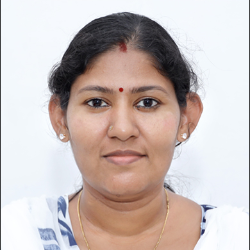About the Course :
This course introduces students to various types of treatment techniques adopted for a public water supply system. Students will understand the role of an environmental engineer in ensuring public health and aware about the significance of water resources and the factors affecting the quality and quantity of water. They will learn how engineering approach can enhance the environmental quality by scaling up the physical and biological purification processes that exist in nature.
Expected Outcomes:
The students will
i. become aware of the various pollutants affecting water quality
ii. know about the different treatment units available in a water treatment plant and their design
procedures
Syllabus
- Module- 1 Introduction of environment- sources of water supply-Water demand, quantification of water demand through population forecasting – Factors affecting consumption-Fluctuations in demand
- Module- 2 Quality of water – Drinking water standards – Physical, chemical and biological analysis.
- Module- 3 Treatment of water-Theory and principles of Sedimentation tanks- Stoke’s law-Types of settling -Coagulation-
Mixing- Flocculation, Design of Sedimentation tanks - Module- 4 Filtration-Types of filters- Working and Design of Rapid and Slow sand filters. Loss of head in filters, Pressure filters
- Module- 5 Disinfection of water – Methods, Chlorination-Types, Factors affecting – Chlorine demands. Lay out of water distribution network-Methods of distribution-Hardy cross method-Equivalent pipe method Text Books:
1. B.C Punmia, “Water Supply Engineering”, Laxmi Publications Pvt. Ltd., 2016
2. G S Birdie, Water Supply and Engineering, Dhanapat Rai Publishing Company, 2014
3. P.N. Modi, “Water Supply Engineering”, Standard Book House, NewDelhi
4. Peavy H S, Rowe, D.R. Tchobanaglous “Environmental Engineering” Mc GrawHill Education, 1984
5. S.K.Garg, “Water Supply Engineering”, Khanna Publishers. 2010
References
1. K N Dugal, Elements of Environmental Engineering, S Chand and Company Pvt Ltd, 2007
2. Mackenzie L Davis, Introduction to Environmental Engineering, McGrawhill Education (India), 2012
3. Metcalf & Eddy , “Waste Water Engineering”, Tata Mc Grawhill Publishing Co Ltd, 2003
4. P Venugopala Rao, Environmental Engineering, PHI Learning Pvt Ltd, 2002
5. Subhash Verma, Varinder Kanwar, Siby John, Water supply Engineering, Vikash Publishing, 2015
Curriculum
- 5 Sections
- 14 Lessons
- 10 Weeks
Expand all sectionsCollapse all sections
- Module 1Introduction of environment- sources of water supply-Water demand, quantification of water demand through population forecasting – Factors affecting consumption-Fluctuations in demand3
- Module 2Quality of water - Drinking water standards - Physical, chemical and biological analysis.2
- Module 3Treatment of water-Theory and principles of Sedimentation tanks- Stoke’s law-Types of settling -Coagulation- Mixing- Flocculation, Design of Sedimentation tanks4
- Module 4Filtration-Types of filters- Working and Design of Rapid and Slow sand filters. Loss of head in filters, Pressure filters2
- Module 5Disinfection of water - Methods, Chlorination-Types, Factors affecting - Chlorine demands. Lay out of water distribution network-Methods of distribution-Hardy cross method-Equivalent pipe method3

